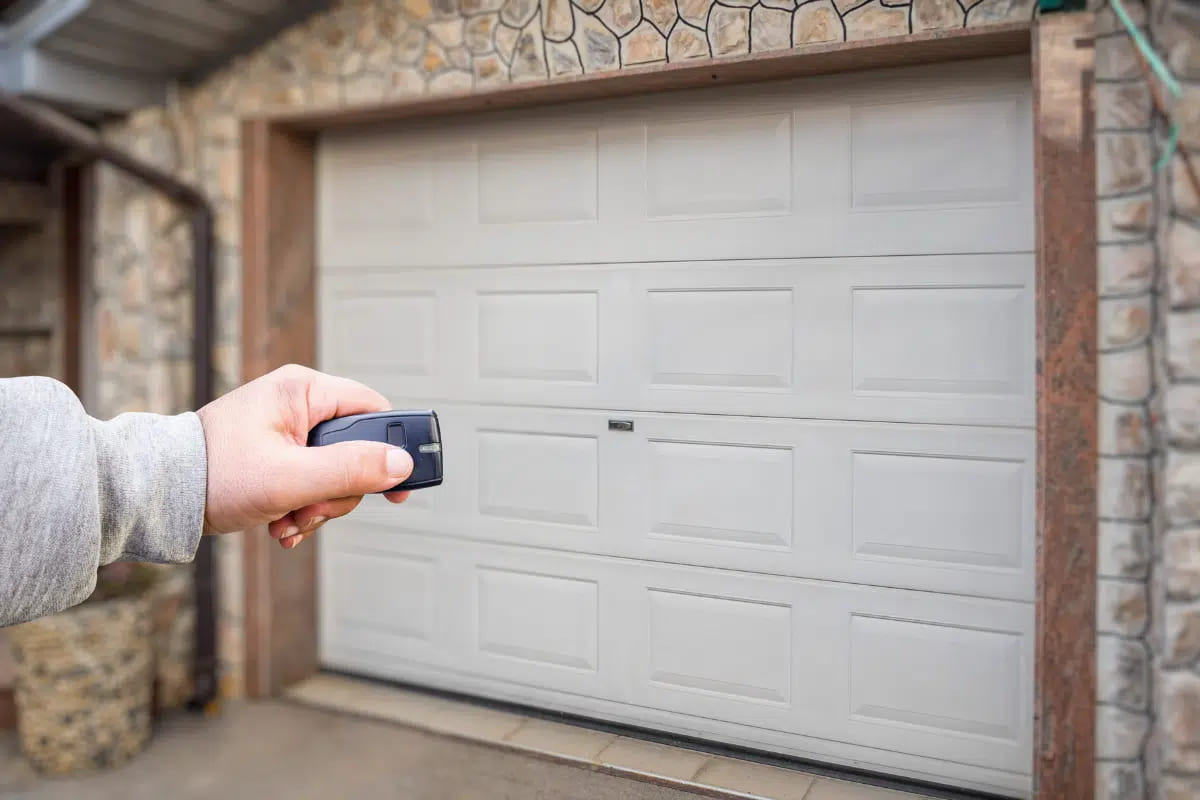
A garage door opener is a pivotal component of your home or business’s day-to-day convenience and security. Understanding how long does a garage door opener last helps you budget for replacements, plan maintenance, and avoid untimely failures. This in-depth guide, tailored for American climates and Florida business owners, explores lifespan averages, warning signs, influencing factors, and upgrade considerations.
Average Lifespan of a Garage Door Opener in USA
The expected service life of a garage door opener depends on its design, usage patterns, and exposure to local weather conditions—factors that homeowners must weigh when planning for replacements or maintenance.
Industry averages and local climate impact

Most residential garage door openers have an average lifespan of garage door opener in the USA of 10–15 years. This estimate, derived from industry data, assumes moderate use—around 4 cycles per day—and regular maintenance. However, local climate plays a substantial role:
- High humidity and salt air can corrode electronics and drive components
- Extreme temperature swings (−40 °C to +35 °C) stress lubricants and plastic gears; bulkhead heaters or insulated enclosures can preserve opener function.
- Milder winters but frequent freeze–thaw cycles require robust weatherstripping to prevent moisture ingress into the motor housing.
Cycle-based usage lifespan explained
Openers are rated for a certain number of cycles (one cycle = open + close). Common ratings:
- Standard openers: 10,000–15,000 cycles.
- Heavy-duty models: Up to 25,000 cycles, ideal for commercial or multi-vehicle garages.
- High-cycle units: Over 40,000 cycles, often integrated into commercial garage doors for businesses.
At 6 cycles per day, a 15,000-cycle opener runs for approximately 6.8 years. Tracking your cycle count helps predict when I should replace my garage door opener.
Signs Your Garage Door Opener Needs Replacement
Over time, subtle indicators reveal that your opener is nearing the end of its useful life; spotting these issues early can prevent inconvenient failures and expensive emergency repairs. If you’re asking yourself how to know if garage door opener needs replacement, look for these key warning signs and performance drops.
Inconsistent operation or noise
Early indicators of mechanical or electrical wear include:
- Erratic movement: Jerky starts or stops, inconsistent speed, or sudden reversals.
- Unusual noises: Grinding gears, high-pitched whining, or buzzing from the motor housing indicate worn components.
- Delayed response: Increased lag between remote command and door action suggests weakening surge capacity or aging capacitors.
Safety and security concerns
Older openers may lack modern safety features or have degraded over time:
- Photo-eye failures: Misaligned or non-compliant sensors pose risk of closing on objects or people.
- Rolling code absence: Pre-1993 openers may use fixed codes easily intercepted, raising safety upgrade reasons to change opener for enhanced security.
- Manual release issues: Stuck, broken, or tampered emergency release cords can prevent operation during power cuts.
Factors That Affect Opener Longevity
Before diving into specific drive types and environmental effects, it’s essential to understand that both mechanical design and operating conditions collectively influence the overall durability of your opener.
Belt drive vs chain drive comparison
Belt drive openers run quieter and with less vibration, which reduces wear on framing and fasteners. However, belt materials can degrade faster under UV and extreme heat. Chain drive openers endure higher loads and heavy usage with less risk of material fatigue but generate more noise and require frequent lubrication. When choosing for noise-sensitive residential areas or 24/7 commercial sites, weigh belt drive vs chain drive opener longevity against acoustic and usage demands.
Impact of humidity and weather

Understanding how humidity affects garage door opener electronics enables you to protect sensitive components by installing moisture barriers or dehumidifiers. Humidity and temperature extremes significantly affect electronics and mechanical parts:
- Moisture ingress: Condensation in the gearbox or circuit board causes corrosion—installing openers in Marco garage door shelters or insulated compartments mitigates this.
- UV exposure: Sunlight degrades plastic belt casings and remote keypads; UV-resistant models can prolong component life.
- Cold startups: In subzero conditions, lubricants thicken, increasing motor torque requirements and battery strain on wireless components.
Maintenance Tips to Extend Lifespan
Regular care and preventative maintenance can significantly lengthen the operational life of your garage door opener, preventing minor issues from escalating into costly repairs. These maintenance tips to extend garage door opener life include simple routines that homeowners and business owners can follow to keep systems running smoothly year-round.
Routine inspections and lubrication
Semi-annual maintenance is critical:
- Visual inspections: Check mounting brackets, chain tension, and gear wear.
- Lubrication: Apply garage-door-specific grease to chains, hinges, and pulleys—never on belt surfaces to avoid slippage.
- Tighten hardware: Vibration loosens bolts over time; secure all fasteners to prevent misalignment.
- For professional tune-ups, schedule with our garage repair services team to ensure warranty compliance.
Firmware updates for smart openers
Smart openers require periodic software updates:
- Performance patches: Improve motor control algorithms for smoother operation.
- Security updates: Refresh encryption keys to protect against evolving hacking methods.
- Feature upgrades: Access new integrations (e.g., geofencing or voice assistant improvements) that enhance user experience.
When to Upgrade: Safety and Tech Benefits
Knowing when to replace your garage door opener not only ensures seamless operation but also unlocks new safety features and technological advantages that older models lack.
Smart features and connectivity
Modern openers offer:
- Wi-Fi & app control: Monitor and operate from anywhere, ideal for frequent travelers or multi-site management
- Activity logs: Track how many cycles will a garage door opener last in real time, aiding in proactive decision-making.
- Integration: Sync with home or business automation platforms for seamless security and climate control coordination.
Additionally, a smart garage door opener lifespan comparison can help you understand how advanced connectivity and firmware support impact overall durability and performance.
Compliance with modern safety standards
Upgrading ensures conformity with current regulations:
- UL 325 requirements for auto-reversal sensitivity.
- USA for barrier-free design in public-access garages.
- Mandatory photo-eyes & edge sensors reduce liability and improve user safety.
Conclusion: Is It Time to Replace Your Opener?
As you assess when I should replace my garage door opener, consider age, cycle count, operational inconsistencies, and the absence of modern safety or smart features. If your opener is approaching 10 years, has seen over 10,000 cycles, or shows warning signs, consult Marko Door for expert replacing garage door solutions and ensure uninterrupted access. Our certified technicians provide options ranging from mid-range belt drives to high-cycle commercial models, tailored maintenance plans, and emergency repairs to keep your garage operating smoothly for years to come.





